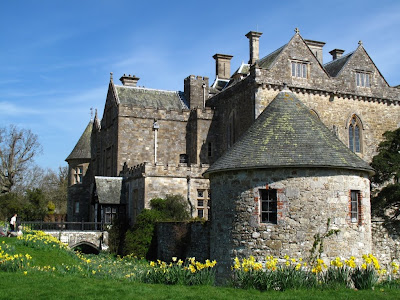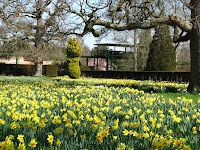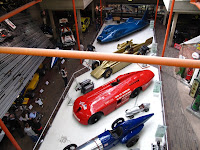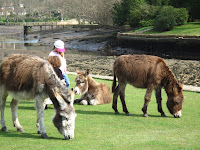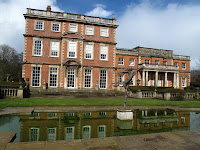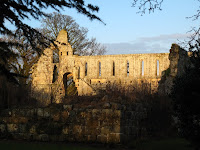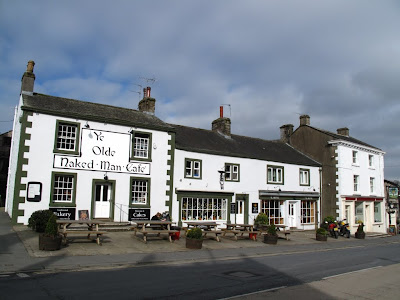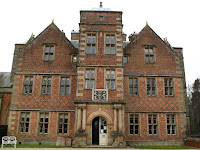

Today we joined the annual MG picnic at Arundel Castle. It was a lovely day, and by the end of the morning, the lawns below the castle, were overflowing with MG's.

Arundel Castle was first built on 1067, and the Keep which is open to the public, is part of that original castle building. The castle proper was rebuilt in Victorian times, after it had lain ruined since the Civil War in the 17th century, and is an amazingly dramatic building, everything is on a generous scale.

Most rooms are rather austere, but the Drawing Room is a blaze of colour and has a welcoming feel. The private chapel is very beautiful, with marble columns, but the most dramatic and appealing room in the house, is the Library. It can hardly be called a room, as it is a series of long rooms, with rich carved mahogany panels, cabinets for books, rich red carpets and curtains. The fireplaces in nooks off to the side of the library made you wish you could spend a winter's day relaxing there with a book. It is said to be the best such private library in England.

In the grounds is one of the more unusual churches we have visited in England. Back in Henry 8th's day, it was decreed that the church had to be given to the new Church of England. But the Duke of Norfolk argued that his ancestors were buried there, so as a compromise, the church was divided in two. Half is the Arundel Parish Church of England and used for normal services, the other half can only be entered from the grounds of Arundel Castle, and is still Catholic. It is full of huge and ornate tombs of the Norfolk ancestors.
The grounds were complimented by the new ''Collector Earl's Garden”, which opened in 2008. It is a lovely tranquil, but dramatic area, which will be even more stunning in another week's time, when the tulips are open.

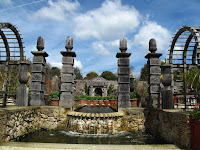

After a relaxed day admiring the MG's, exploring the castle and the very attractive town, we decided to call into Petworth House on the way back to London. Every room open to the public is covered with works of art by Titan, Turner, Van Dyke, Lely, Cyup among many others, including one by Hieronymus Bosch.

After Arundel, where the Victorian Castle still seems crisp and new; Petworth would appear very jaded and tired, were it not for the stunning array of artworks. The highlight of the collection is in the Carved Room. Here the entire huge room is filled with old masters in wall to wall carved wooden frames. Half the room was carved by the famous carver Grinling Gibbons, and this was then copied in the remainder of the room. Pride of place in the centre of the long wall, above the fireplace is a painting of Henry 8th. Under all the large paintings are seascapes by Turner, which are almost overlooked in the overall splendour of the room.

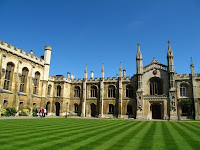 Today was wall to wall sunshine for the whole of England and Wales; a perfect day to enjoy clear blue skies, with not a single vapour trail in sight. (Volcanic ash having grounded every jet.) We drove north to Cambridge, and even the roads seemed quiet. Could Luton and Stansted airports account for so much of the traffic?
Today was wall to wall sunshine for the whole of England and Wales; a perfect day to enjoy clear blue skies, with not a single vapour trail in sight. (Volcanic ash having grounded every jet.) We drove north to Cambridge, and even the roads seemed quiet. Could Luton and Stansted airports account for so much of the traffic?
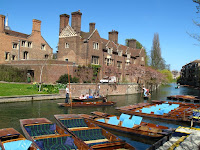
 After parking in Grantchester we set out on the pleasant walk of about 2.5 miles along the Cam into Cambridge. There were plenty of daffodils still flowering along the backs, as we walked past the colleges. Following the Cam took us to the north end of Cambridge, and we were then able to walk back through the town, lunch by the Cam and on to the Botanical Gardens before walking back to Grantchester.
After parking in Grantchester we set out on the pleasant walk of about 2.5 miles along the Cam into Cambridge. There were plenty of daffodils still flowering along the backs, as we walked past the colleges. Following the Cam took us to the north end of Cambridge, and we were then able to walk back through the town, lunch by the Cam and on to the Botanical Gardens before walking back to Grantchester.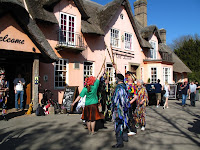 Grantchester is an attractive small village, made famous by Rupert Brooke in his poem 'The Vicarage'. The Orchard, where he lived before living at The Vicarage, is now an extremely popular tea-room.
Grantchester is an attractive small village, made famous by Rupert Brooke in his poem 'The Vicarage'. The Orchard, where he lived before living at The Vicarage, is now an extremely popular tea-room. We took the scenic back roads on the return trip to London. The first stop was Triplow. Last month they had their annual Daffodil Day, and due to the late seasons this year, there were still daffodils flowering. It must have looked stunning when they were all at their best.
We took the scenic back roads on the return trip to London. The first stop was Triplow. Last month they had their annual Daffodil Day, and due to the late seasons this year, there were still daffodils flowering. It must have looked stunning when they were all at their best.









